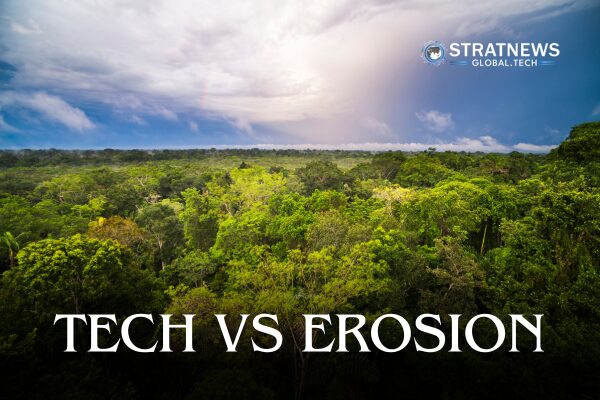Marajo Island Battles Coastal Erosion with Innovation
Where the Amazon rainforest meets the Atlantic Ocean, Brazil’s Marajo Island is struggling against rising sea levels and worsening coastal erosion. The loss of mangrove forests, which protect the island’s shores and provide vital habitats for fish and crabs, has become a serious concern for local communities.
Communities Facing the Impact
Residents of Marajo have already felt the harsh effects of erosion. “Two years ago, it destroyed the houses of the 15 residents who lived here on the beach. It was very strong,” said local resident Patricia Farias Ribeiro. As the coastline retreats, families are forced to move further inland, losing both homes and livelihoods.
To tackle these challenges, researchers are introducing low-cost sensors that monitor air temperature, rainfall and tide levels. The data helps conservation teams understand environmental changes and provides residents with practical information, such as ideal fishing times. “Over time, you can identify what changes are taking place, and we will correlate this with the biodiversity monitoring data,” explained Lisangela Cassiano of the government park service ICMBio.
Cassiano manages the RESEX Soure marine reserve on Marajo, one of three sites where ICMBio and the International Union for Conservation of Nature (IUCN) have installed these sensors. Built at the Federal University of Para, the devices form part of a broader effort to preserve the island’s fragile ecosystems.
Technology Driving Conservation
According to a 2024 study published in Ocean and Coastal Research, Marajo has lost up to 150 metres of coastline in 16 years. Rising sea levels linked to climate change remain a major driver. As the UN COP30 climate talks took place nearby in Belem, President Luiz Inacio Lula da Silva highlighted the urgent need to protect forests. He announced the creation of the Tropical Forests Forever Facility, a global fund to safeguard tropical biomes such as the Amazon.
Deforestation in Brazil has also declined by 11.08% in the year to July 2025, reaching its lowest level since 2014, according to the Brazilian space agency Inpe. New technologies have played a role in this progress, including projects led by re.green, an ecological restoration company using artificial intelligence (AI) to restore degraded forests.
Restoring Forests for the Future
Founded in 2021, re.green combines technology, science and business to make forest restoration financially sustainable. The company has acquired or leased 37,000 hectares of land, with 17,000 hectares now under active restoration. Its efforts were recognised in 2025 with an Earthshot Prize, granting £1 million to expand operations.
CEO Thiago Picolo said the company uses drones to survey remote areas and identify the best restoration opportunities. AI helps assess land viability, biodiversity benefits and climate impact. “Tech and science need to be applied to what we do now so we can figure out how to make forests come back faster and better,” he said.
Re.green also supports local communities by creating tech-based jobs and promoting small businesses such as honey and acai production. Restoration approaches vary: heavily damaged areas require replanting, while others recover naturally.
Making Monitoring Affordable
On Marajo Island, researchers from the Federal University of Para aim to make environmental monitoring accessible to remote coastal communities. Their open-source sensor system is five to 25 times cheaper than commercial alternatives. Built using 3D printing and modular design, it allows easy repairs and replication.
“The goal is to make monitoring affordable for remote coastal communities,” said researcher Renan Peixoto Rosario. Affordable, adaptable technology could help ensure that the Amazon’s front line in the fight against climate change remains resilient for years to come.
with inputs from Reuters


